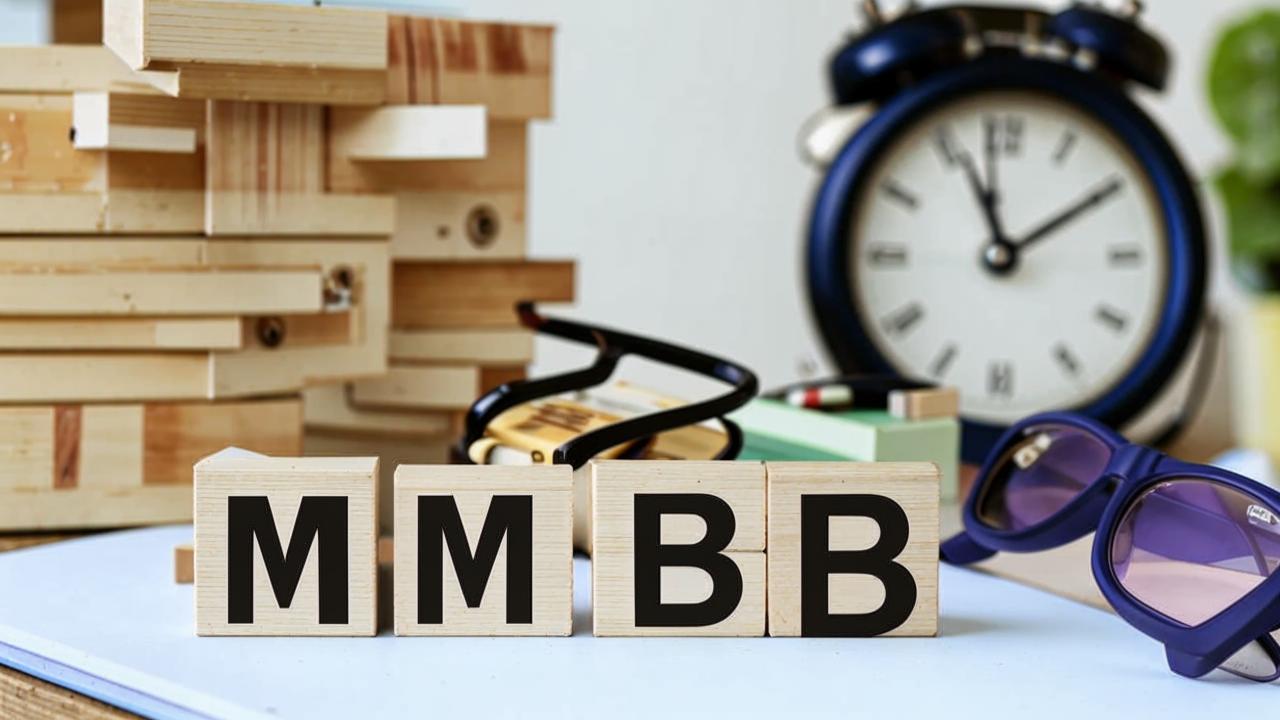Even before the emergence of psychology as a science, people began to take an interest in differences between people and to seek explanations for such differences. Researchers tried not only to create a theory or classification, but also to confirm through research the reliability, accuracy, and universality of their use.
Some authors have drawn from empirical data and used it to form various personality models. Others, on the contrary, have drawn from theory and tried to recreate it in practice.
And now, it seems, a progressive, universal and simple at first glance model of types – the MBTI method – has appeared. Today many people are talking about it, HR from the world’s top corporations even use the system when hiring employees. Social networks are full of questionnaires on the topic: “who are you from MBTI”? But is everything so smooth in this method?

What does the acronym MBTI stand for?

psychologist, gestalt therapist
“MBTI is a psychological technique with the help of which certain indicators are used to determine the type of personality depending on individual differences in information perception and decision-making. It allows to reveal behavioral stereotypes that are peculiar to a person in any sphere of activity. Therefore, the adherents of the technique believe that it allows to improve the understanding of motives – both their own and another person’s”.
The method is based on the theory of the famous psychoanalyst Carl Gustav Jung. It was developed by scientist Isabel Myers-Briggs together with her mother Katherine Briggs. Actually, the model was named the Myers-Briggs Type Indicator or MBTI.
Katherine Briggs was an admirer of Jung. She was once inspired by the famous psychologist’s typology of personalities. She even met with him once to discuss the method, which was a breakthrough at the time.
Catherine wanted to put into practice the theoretical data of Jung and prove on the basis of social surveys the validity of the method. The first tests of the test mother and daughter Briggs conducted on relatives and friends. In the 50s of XX century the method was tested already on students of George Washington College.

In 1956 the questionnaire was published by the Educational Testing Service, and in 1969 Isabel Briggs-Myers together with the head of the University of Florida founded the Typing Laboratory, which was later transformed into the Center for Applied Typing. Since then, the scientific institution has been conducting research activities and training MBTI specialists.
The method became widely known after Consulting Psychologists Press obtained the rights for its distribution in 1975. In 1979, the Psychological Type Association was founded to train MBTI specialists. The Journal of Psychological Type became the main mouthpiece of MBTI typology research.
Forms of MBTI testing
In any large analysis and data collection, there are several ways to assess personality. Katherine Briggs’ method also consists of different steps.
1. MBTI Step I. Aimed at identifying the personality type.
2. MBTI Step II. Allows for a more accurate description of individual differences within a particular type.
3. MBTI Step III. Analyzes the dynamics of type development.
In the late 90’s MBTI testing was used by 20 to 30% of large companies in the U.S. market, interviewing job seekers in order to form an effective team. The methodology was also widely spread among students who use it for career guidance.
In 2011, an express questionnaire consisting of 60 questions appeared on the website of the British company Neris Analytics Limited. According to the creators of the online resource, users from the United States take the test most often – 20% of the total number of visitors to the site. The second place is occupied by representatives from South Korea – 5.33%.
Even fictional literary and cinematographic characters – Disney princesses, Harry Potter and Darth Vader from “Star Wars”, for example – can be recognized as MBTI types.

What is the MBTI based on?
The methodology is based on Carl Gustav Jung’s assumption that the world around us is perceived through four basic psychological functions: sensation, intuition, feeling and thinking. The experience obtained as a result of perception is interpreted by each person depending on his individual characteristics and preferences. As a result, it reflects on his needs, interests, values and motivation.
Interestingly, Jung divided these mental functions into two groups: rational – thinking and feeling, and irrational – sensation and intuition.
The functions “feeling” and “thinking” are functions of judgment, their main task is to make decisions. And the functions “intuition” and “feeling” are responsible for perception, gathering information.
It is worth noting that in the context of the methodology, “thinking” does not mean intelligence or competence, but only the tendency to determine objective truth. By “feelings” is meant decision-making based on values, emotional intelligence, rather than feelings and emotions per se.
Each person has all four represented, but only one is dominant. The other three are not so pronounced, mostly unconscious. In cases of impossibility of manifestation of the dominant function replace it.
According to Jung, each of the processes can be extroverted or introverted. This position was transferred to the basis of the MBTI methodology.
Description of MBTI personality types
Based on Jung’s large theoretical base and practical work, Katherine and Isabel Myers-Briggs formed 16 personality types. They can be conditionally categorized into the following groups.
1. Career orientation
2. information utilization
3. Reaction to change
4. Leadership and subordination
There are four main types in each group. After receiving the questionnaire with questions, the specialists can identify the dominant personality type in the respondent.

1. logistician, administrator, inspector
Reliable, consistent, serious, organized, pedantic. This is a hard-working and industrious person. He is a fan of order, deeply penetrates into the assigned work and always brings it to the end. Does not take information on faith, all carefully considers and analyzes.
2. Protector, guardian, executor
The most extroverted introvert. Loyal, attentive, neat, kind-hearted, caring. Seeks solitude, very reserved in communication, inclined to maintain psychological distance, always “keeps a face”. Hardly tolerates moral pressure, but knows how to stand up for himself.
3. lawyer, consultant, visionary
Rational, diligent, ideal negotiator. Possesses excellent intuition, very sensitive to others, attaches great importance to trust, painfully perceives aggression, betrayal and treason. He is fond of self-education, has a talent of educator, is able to see the potential in another person.
4. architect, strategist
Single-minded, punctual, objective, independent. Such a person is inclined to analytical thinking and strategic planning. Able to act logically and effectively in situations of uncertainty or lack of information. Is intuitive and uses his/her abilities to realize his/her global ideas by developing a strategy and consistently putting it into practice.

5. Masterful, virtuoso, logical pragmatist
Straightforward, consistent, loyal, punctual but unpredictable. Needs lively communication, empathic, senses other people subtly, rejecting naïveté and falsity. Possesses a technical mind, oriented on facts and logic, likes to work with his hands. Persistent and likes to bring everything to the end.
6. Artist, composer
Friendly, gentle, caring, open. Likes solitude, avoids conflicts. Easily gets along with people, respecting their personal space, creates an easy and relaxed atmosphere around him. A good helper, likes to be needed and useful.
7. Mediator, healer, mediator
Contemplative, lyrical and romantic. Idealist, friendly, empathic, balanced, dreamy. Creative person, partial to everything new, beautiful and original. Well versed in people, able to predict events. Has a developed system of values, has a good sense of humor.
8. Thinker, scientist, analyst, polymath and philosopher
Cautious, meticulous, indecisive, self-sufficient. Most often acts according to an algorithm, but is attentive – able to quickly find errors and inconsistencies. He is interested in the thinking process as such. Works best in solitude, is reserved in emotions and devoted to relatives, friends and ideas. Appreciates comfort and coziness.
9. Businessman, entrepreneur
Gambling, risk-taking, impulsive, sociable. Able to act effectively where it is necessary to react quickly and decisively. Tends to achieve victory at any cost, making a specific plan and clearly following it. Does not like to obey, prefers to lead.

10. Artist, politician
Friendly, generous, caring, optimistic, impulsive. Pleasant in communication, the soul of the company, easily attracts the attention of others. Likes to learn and teach others, noticing and taking into account their capabilities, strengths and weaknesses, in connection with which he is more inclined to leadership. Sometimes uses his knowledge of people for manipulative purposes. In communication keeps a distance and is guided only by his own interests, in relationships seeks harmony.
11. champion
Active, sociable, perceptive, energetic, impulsive, independent, unorganized and impractical. One of the most creative types. Creative person with good intuition, able to succeed quickly and also lose interest quickly. Enthusiast, so very effective in a team, able to cooperate and inspire others, quickly grows connections in different spheres of life.
12. Argumentative
Bold, energetic, inquisitive, inventive, assertive, original. Has a wide range of interests, very fond of conversations on intellectual topics, but prefers facts and evidence. Easily adapts to new conditions, so it is easy to move to new ways of working, which himself and invent. Can easily communicate his idea to others, no matter how complex it may be.
13. Director
Organized, honest, hardworking, responsible, practical, realistic, loyal and methodical. Such a person is prone to planning and rigid rules, copes well with routine, relies on fact and logic in his decisions. Works better in a team. The surrounding unpredictability and uncertainty is trying to bring order, from which he quickly gets tired.

14. Educator, enthusiast, aesthete
Communicative, responsible, responsive, non-conflictive, optimistic. Able to build contact with almost everyone, skillfully achieving peaceful coexistence. Although inclined to emotionally influence others, likes it when others emphasize his virtues. If necessary, ready to sacrifice his own interests in favor of another.
15. Protagonist, coach, teacher
Charismatic, open-minded, loyal, dependable, goal-oriented, artistic. Very empathic and emotional creative person with expressive facial expressions and eloquence. Has good intuition and the gift of persuasion. A born leader and salesperson. Knows how to inspire and can experience frustration as a subordinate.
16. Commander
Responsible, proactive, outgoing, and insightful. Possesses leadership qualities, makes decisions quickly, weighing all the risks beforehand. Has a well-developed intuition, thanks to which he finds non-standard and effective solutions. Mistakes and failures are perceived as an opportunity to become better.
Prevalence of personality types
Statistics show that among those tested, feeling-oriented personalities are more common – 74%, as opposed to intuition – 24%. And more inclined to judge than to perceive.
Among women, the most common type is a combination of introverted and sensory-oriented tendencies. This proves the view that the fair sex is more caring, supportive, moderately reserved, prone to self-sacrifice and compassion. Among men, representatives of this type are twice less.
But the rarest type among women possesses qualities peculiar to the male identity – independence, confidence, ambitiousness. Also infrequent among the fair sex are those who are more guided by thinking when making decisions than by feelings.
Among men, the most frequent type – inclined to think objectively and logically, rather than being guided by their feelings and oriented to personal problems.

Psychotypes in society
The main parameters by which MBTI types differ are the way of receiving and perceiving information, as well as decision-making mechanisms. For example, in Russia, the most common types are people who tend to observe hierarchy and have a developed sense of responsibility. As a rule, they choose traditional, long-established regions with developed infrastructure as their place of residence.
The most rare type, based on intuition and thinking. These are people who easily adapt to new conditions and strive for knowledge, objective, resourceful. However, they are overconfident, very selfish, which prevents them from working in a team. In Russia, such qualities rarely meet with approval.
The second most popular in Russia is the type of people who live by the principle of “here and now”. They like spontaneity, risk and adventure. They adapt quickly to any new situation and are generally easy on the feet. Easily establish a large number of social connections, able to benefit from any situation. That is why representatives of this type are most often found in those parts of the world where living conditions are difficult and unorganized.

MBTI personalities in professions
Personality types inclined to perfectionism, individualism and leadership are more often found in professions that do not require mandatory teamwork. For them, it is important to focus on their own observations and reflections. Most often such types become programmers, economists, traders, financiers, architects, analysts, lawyers, managers.
Thoughtful, creative, sensitive, communicative people are found among the professions involving interpersonal communication: psychologist, writer, scientist, customer service manager, designer, public relations specialist. They also choose other occupations: sales manager, human resources officer, journalist, restaurateur, event organizer, copywriter, photographer, artist.

People with types where the main features are accuracy, attentiveness and the ability to rely on their feelings, more often choose a profession that requires poise and a serious approach. They become auditors, accountants, financiers, civil servants, teachers.
Those inclined to leadership, social harmony and order are found among lawyers, judges, project managers, doctors, social workers, psychologists, museum workers, real estate agents and technical support specialists.
Representatives of types that prefer to live in the moment and love freedom can be found among engineers, pilots, EMTs, and criminalists because of their tendency to be spontaneous and quick to solve problems.

Where is the MBTI test used?
The MBTI methodology allows you to assess character strengths and weaknesses, evaluate motivation, understand personal triggers that cause stress. The test is also actively used when choosing a profession suitable for the character fold.
The methodology is widely used in sociology and employment.
1. MBTI is used in the field of career guidance, from job selection at a young age to career self-determination at a mature age.
2. the test is used in the field of team building and selection of people so that individual differences work for the common good and cause.
3. Surveys help in forming a group of learners and providing them with information in a way that is suitable for the majority so that it can be maximized and applied later on.
4. MBTI is indispensable in the field of HR in the selection and counseling of employees and managers. With the help of the technique, specialists not only find applicants who are close in temperament, but also use it to motivate employees.
5. The test is used in the field of improving management style. It helps the manager to determine the line of behavior, to find his strengths and weaknesses.
6. The questionnaire helps in the field of conflict management. MBTI technique helps in understanding and accepting the differences and individual characteristics of each personality. It also helps in finding ways to solve conflicts.
Criticism and disadvantages of the methodology
Representatives of the Myers-Briggs Center claim about 90% accuracy of the methodology. But studies conducted by other psychologists refute this statement. In addition, the practical data to which the representatives of the Center refer have not been published in any psychological publication recognized by the scientific community, except for the Journal of Psychological Type.
In the U.S., several major organizations, including the Military Research Institute and a special committee of the U.S. National Academy of Sciences, have recognized the technique as unsuitable for career guidance.
The claims of psychologists begin with Carl Jung’s theory, which formed the basis of the methodology, as it had no experimental substantiation.
Many questions are raised by the dichotomous approach of the methodology, when the respondent is forced to choose between parameters that are not mutually exclusive. That is, a person must give a “yes” or “no” answer to a question that does not imply an unambiguous opinion. And this can lead to erroneous results.

A person in such conditions will be in difficulty in determining his or her preferences. Consciously or unconsciously, he tries to manipulate the results, wanting to be liked or to meet the requirements or standards imposed on him. This is confirmed by the fact that when a person retakes the questionnaire a few weeks later, about 50% of the time he or she gets different answers.
The typological approach itself, which was popular in Jung’s time, over the past decades has shown its insufficiency for a full description of personality. Since then, psychological science has made a U-turn toward a phenomenological approach. It takes into account various aspects of personality, their interrelation, dynamics of changes in the period of time, and also takes into account the state of the respondent at the time of the survey.
It turns out that the MBTI methodology cannot be used as an exact personality test. It offers an easy-to-understand picture, gives a quick and simple answer to the question: “Who am I?”. At the same time, it does not require complex interpretation or spending resources on deep thinking. That is, the survey can be used as an aid, additional information about the person to the already available information.
The main thing is not to put it in the basis of global decisions that can affect the fate or life choice. And certainly one should not shift the responsibility for one’s failures and lack of aspiration for development and personal growth to the methodology.
It is important to remember that a person is much more multifaceted than just the test results. Do not forget that each of us is a living organism and changes in it occur constantly, with each lived experience. Therefore, it is not worth it to confine your personality within the boundaries of one once and for all defined type.






